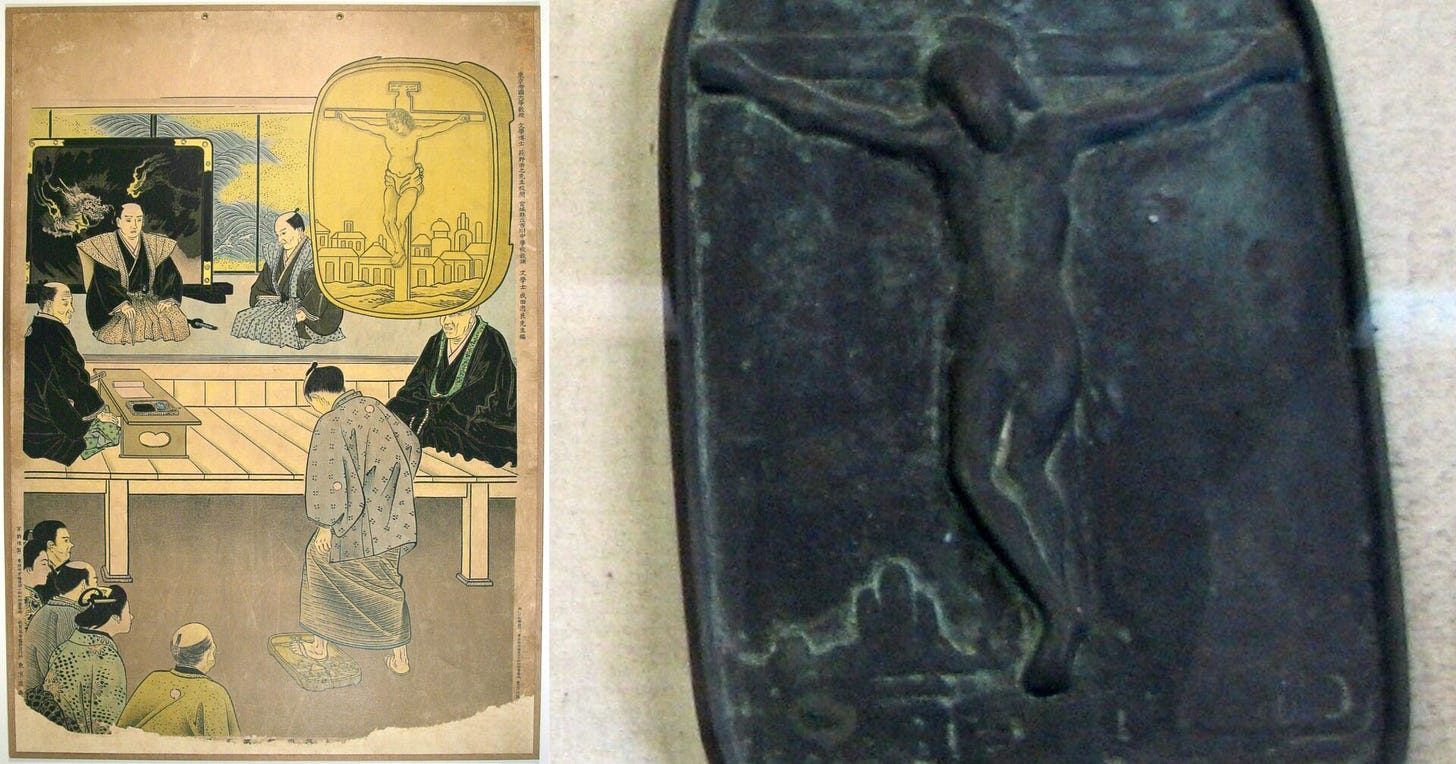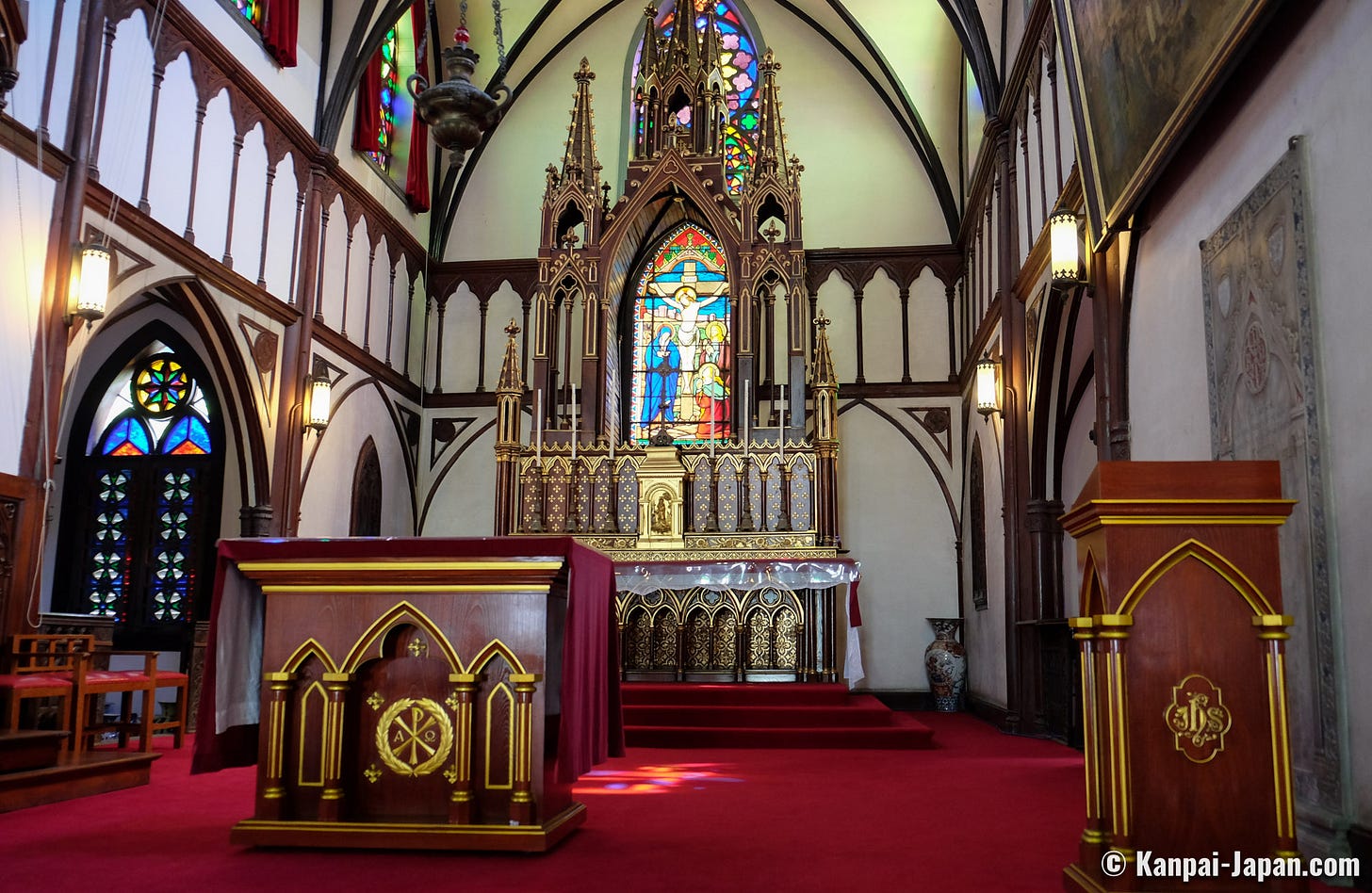Japan’s Hidden Christian Art
When we think of Christian art, our minds often picture stained glass in French cathedrals or Michelangelo’s paintings. We rarely look east, especially not to Japan.
At the end of July I will be taking my wife on a month long trip to Japan, it will be our first visit to the country that we have wanted to visit for a long time. Part of our trip will be to view the Christian artwork and relics found within the country’s museums and gardens. Today we will look at some of the most iconic pieces and understand the history behind them…
Japan today has a religious majority of mostly Shinto & Buddhism, up to 80% of the population identify as such. There still remains however a small Christian community since the religion was introduced in 1549 by St. Francis Xavier.
Despite Christians being prosecuted in the 17th century, the religion has endured to make up 1% of Japan’s population today. Around 1.5 million Japanese citizens identify as Christian thanks to the efforts of the Kakure Kirishitan, also known as the hidden Christians who practiced in secret until the religion was legalised in the 1800s.
When most people think of Christianity, they picture Gothic cathedrals, Renaissance paintings, or stained-glass windows glowing in European churches. Japanese works detailing Christianity are quite different though, their artworks use a blend of traditional Japanese methods such as sumi-e (ink wash painting), kakejiku (hanging scrolls), and mingei (folk art) techniques.
Here are some of the most integral pieces of Japanese Christian artwork. 🕊✝
1. Maria Kannon (17th century)
During the Edo period, Christianity was banned in Japan. Believers risked death for their faith. To survive, hidden Christians (Kakure Kirishitan) created Maria Kannon statues. These looked like Buddhist images of Kannon, the goddess of mercy. But they were really the Virgin Mary holding the baby Jesus. These statues allowed Christians to worship secretly.
Their beauty hides a deeper meaning. Flowing robes, peaceful faces, and familiar Buddhist forms covered a sacred truth. These statues were lifelines for those living in fear.
Where to see: Museum of the 26 Martyrs, Nagasaki
2. The Christ Fumi-e (17th century)
Fumi-e, or “stepping images,” were made to expose Christians. These bronze plaques showed Christ or Mary. Suspected Christians were forced to step on them. Refusing meant torture or death.
One Christ Fumi-e at Tokyo’s National Museum is worn smooth from years of use. It was not made to inspire faith. It was made to crush it. It’s marks tell another story. Each footprint speaks of struggle, courage, and hidden devotion.
Where to see: Tokyo National Museum
3. Namban Folding Screen (Late 16th to early 17th century)
This folding screen shows Portuguese missionaries arriving in Japan. Rich gold paint fills the background. Priests in black robes carry crosses. Their ships sail into busy ports, watched by curious locals.
This screen shows more than an old meeting of cultures. It captures a brief time when Japan welcomed Christianity. The screen uses Japanese art techniques but tells a Christian story. It is the Gospel told in gold and ink.
Where to see: Kobe City Museum, Hyogo Prefecture
4. The Madonna and Child Kakemono Scroll (Edo Period)
This hanging scroll shows Mary and Jesus dressed like Japanese nobility. The painting follows Japanese art styles, but the message is clearly Christian. These scrolls were kept hidden. Families used them during secret worship and rolled them up when danger came.
Christianity did not disappear in Japan. It existed in people’s hearts and souls, awaiting a time it could rise again.
Where to see: Private collections; examples in Nagasaki Museum of History and Culture
5. Ōura Church and Stained Glass (Built 1864)
Ōura Church is the oldest surviving Christian church in Japan. Built by French missionaries with the help of Japanese workers, the church mixes Western and Japanese design.
In 1865, a group of hidden Christians came to this church. They told a priest, “We are of the same faith.” This event, known as the discovery of the Hidden Christians, marked a powerful moment of reunion after centuries of underground worship. It is recorded in church history and commemorated as a turning point in Japanese Christianity.
Where to visit: Nagasaki City, UNESCO World Heritage site
6. Atom-bombed Mary (Hibaku no Maria)
After the atomic bombing of Nagasaki in 1945, a scorched wooden statue of the Virgin Mary was found in the ruins of Urakami Cathedral. This damaged figure came to be known as the Atom-Bombed Mary. She became a symbol of both the suffering of war and the resilience of faith.
I find the statue to be quite haunting and I cannot explain why, so I have decided not to publish a photograph of it on here. There is however a great article which discusses Japanese art and the Atom-bombed Mary by another author on Substack which I have linked below.
Today, the statue stands in the Nagasaki Peace Park as a reminder that beauty and hope can survive even the most devastating destruction.
Japanese Christian art shows how faith can survive even in the hardest times. Every statue, scroll, and pane of glass tells a story of people who risked everything to keep their faith alive.
Through these works, Japan offersthe world a quiet testimony: that even in silence, Christ can be seen.
God bless,
Charlie








